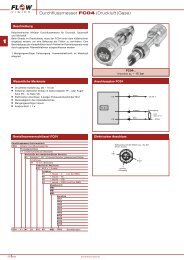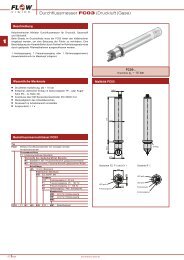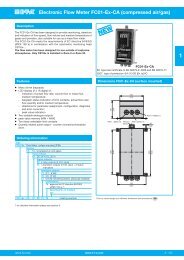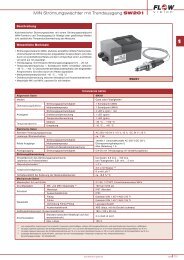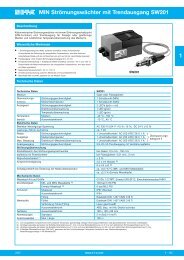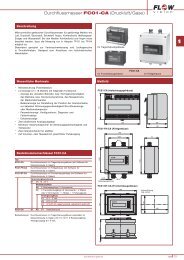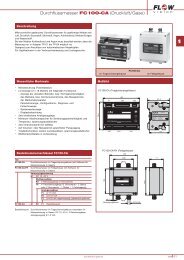User ManUal - FlowVision GmbH
User ManUal - FlowVision GmbH
User ManUal - FlowVision GmbH
Create successful ePaper yourself
Turn your PDF publications into a flip-book with our unique Google optimized e-Paper software.
GMBHFlow Meter | FC100-CAInstallation2 Installation2.1 Installation of calorimetric monitoring headsThese are general directions for the application of calorimetric measuring heads which from applicationto application should be reviewed by the user in accordance with individual requirements.2.1.1 Selection of materialStainless steel 1.4571/AISI 316 TiThe standard monitoring head material is stainless steel 1.4571/AISI 316 Ti, an austenitic, acid-resistingstainless steel that is commonly used throughout industry. Manufacturers claim it also withstandsoxidizing organic and anorganic acids, and partly even reductive media.The resistance of this stainless steel should however be verified by the user, particularly when it isused in medium mixtures that may from time to time be exchanged with cleansing agents. Its chemicalresistance also depends on temperature, flow rate and concentration of the medium.Stainless steels owe their resistance to rust mainly to their alloy combination with chromium, theformation of chromic oxide on the steel surface resulting in a passive state. Contamination, depositson the surface, or foreign rust may however neutralize the passivity. Therefore care should be takento keep the surfaces clean.Stainless steel heads must not get in contact with steel parts other than stainless steel or with chemicallydissimilar metals, as this would cause electrolytic corrosion.Nickel-based alloy (Hastelloy 2.4610)Hastelloy 2.4610 is a material with a chemical resistance generally exceeding that of stainless steel.They are particularly suitable for alkaline media (pH > 7). They should however be examined forsuitability for each specific application using resistance tables and empirical values.12





